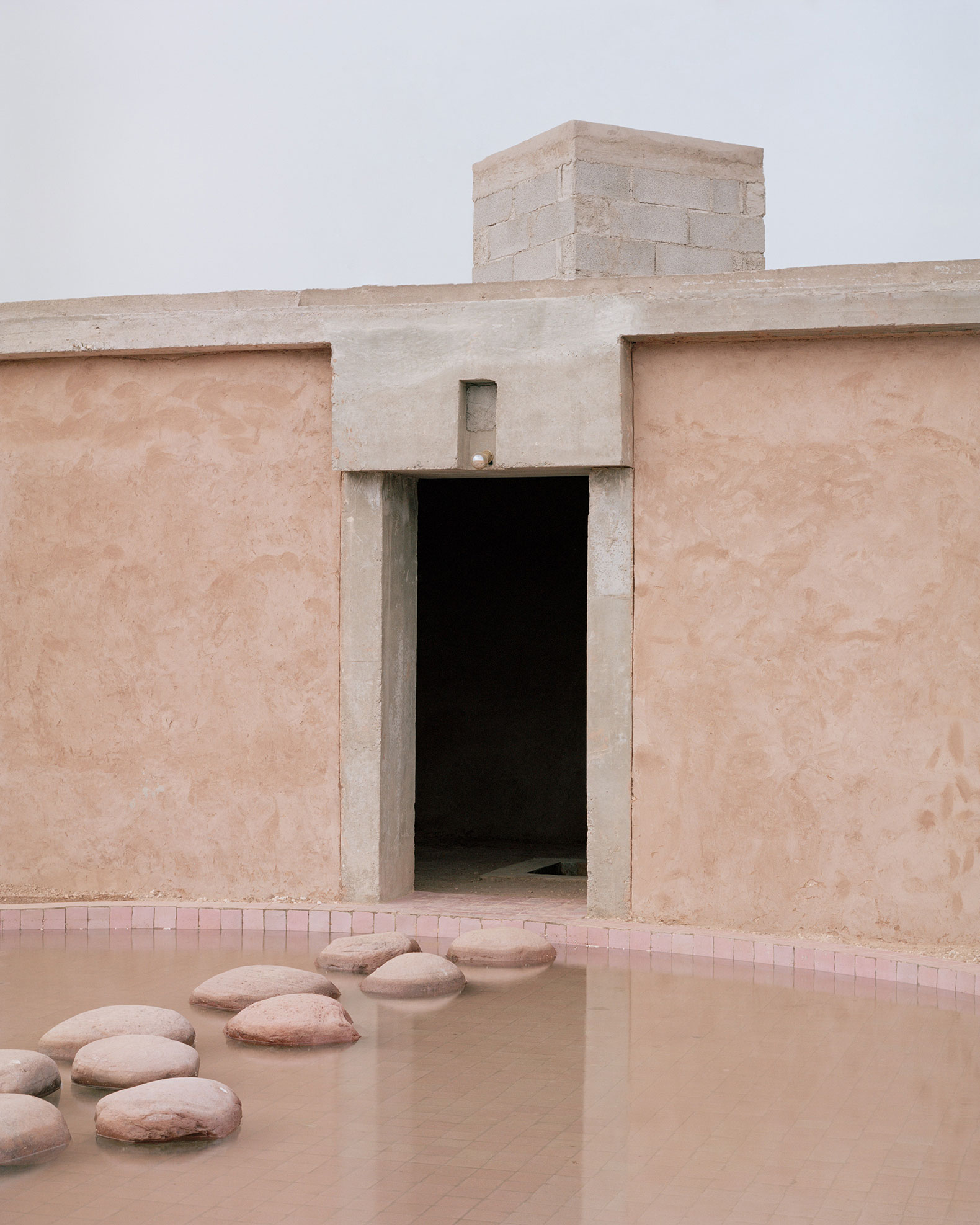
The proposal by Leopold Banchini Architects, which redefines the ancestral typology of houses with courtyards, proposes a habitable structure in constant change using large doors to divide or connect the aligned composition of spaces housed in the house, blurring the boundaries between the interior and the exterior, giving rise to a succession of aligned spaces, bathed in intense sunlight, which is filtered, tinted or conducted through different skylights or small openings.
The house is built following traditional construction methods that vary depending on the chosen solution. While the enclosures and floors are defined from compacted earth, the zenith openings and ceilings are covered with tiles produced in a neighbouring village, highlighting the use of the material that surrounds the work as a sensitive and conscious solution that values craftsmanship and traditional techniques.

Dar El Farina by Leopold Banchini Architects. Photograph by Rory Gardiner.
Project description by Leopold Banchini Architects
Two vital infrastructures cross this desertic plot in the plain of Haouz. The first one, a mesref, is a small water channel filled a few times per year for agricultural purposes thanks to a complex network of canals flowing from the high Atlas. The second, a khetara, is an underground draining gallery built by the Almoravid one thousand years ago to bring water to Marrakesh from distant groundwater. Although mostly invisible, water is an important part of this dry landscape. Humans have domesticated the plain for thousands of years, irrigating and dividing the fields with endless rammed earth walls.
Dar El Farina is a linear rural house following the two lines of the mesref and the khetara. The house divides the land into two radically different landscapes. On one side the desertic land is kept untouched ; on the other side a lush green garden of indigenous plants grows thanks to the ancestral water systems. The off-grid house uses the sun, the soil and the water available onsite to be fully self-sustainable.

The two parallel rammed earth walls defining the domestic space host a succession of rooms, patios and water basins. The harsh sunlight enters the spaces through defined openings and skylights in the ceiling. Large pivot doors allow to divide or connect the enfilade of spaces and blur the boundary between interiors and exteriors. The constantly evolving living structure redefines the ancestral and introverted patio house typology.
While the walls and floors are simply made of compressed soil, the zenithal openings in the ceiling are lined with colorful zellige tiles produced in a neighboring village. The traditional glazing tints the sunrays entering the house before they bounce on the water surfaces. The thick mud walls, controlled sunlight, water features and vegetation create a cool microclimate; a shaded shelter in the desert.

















































